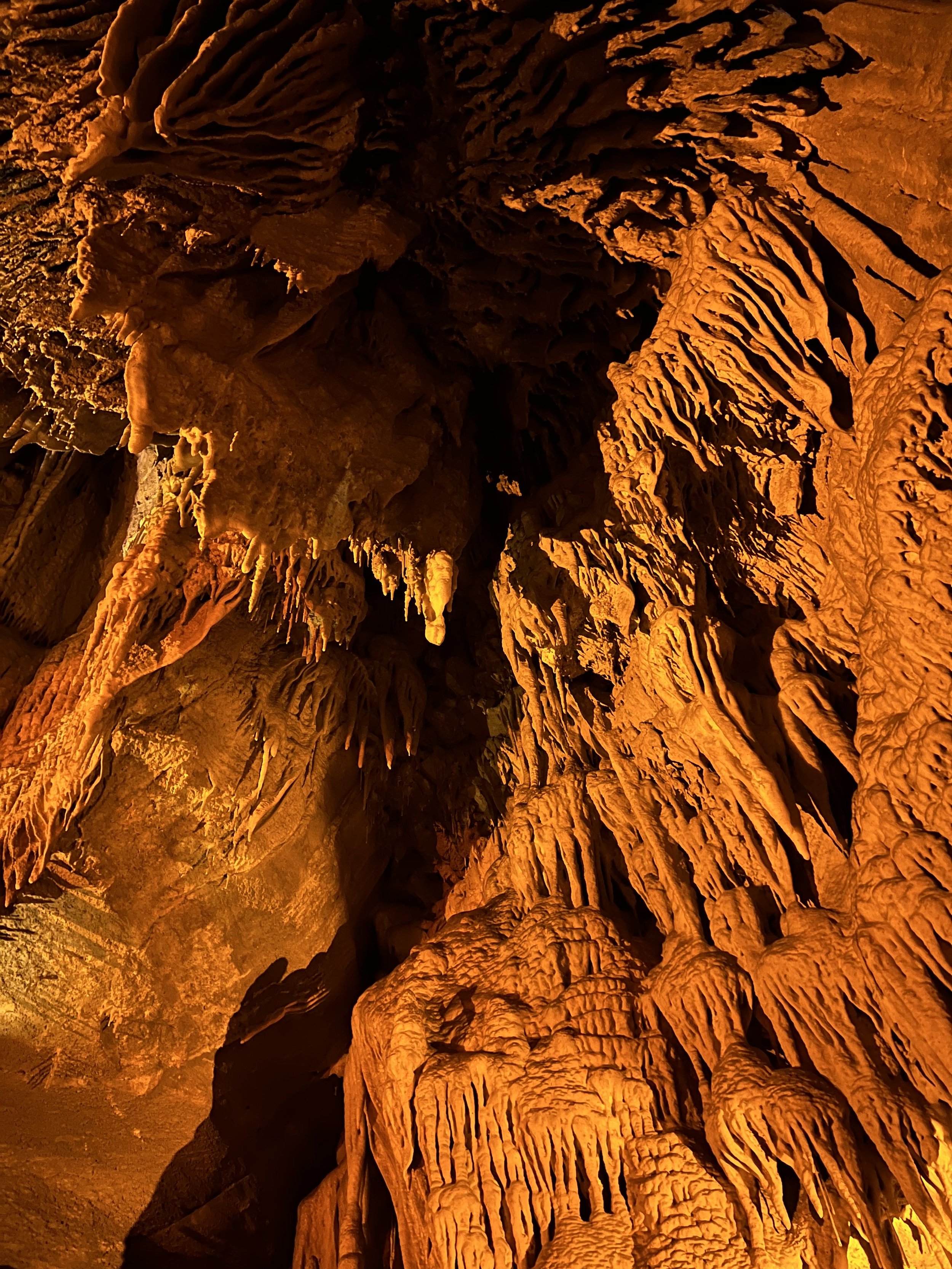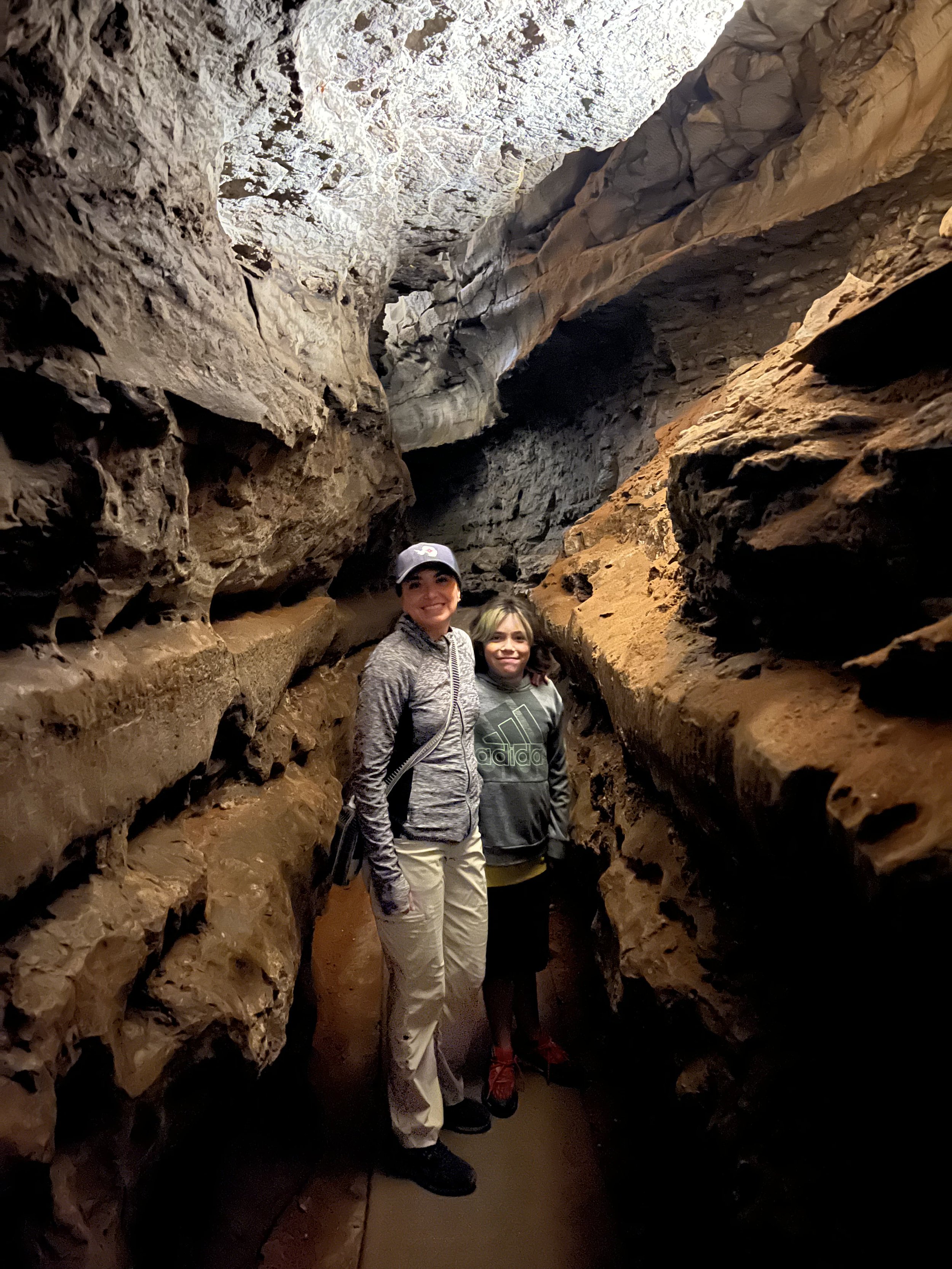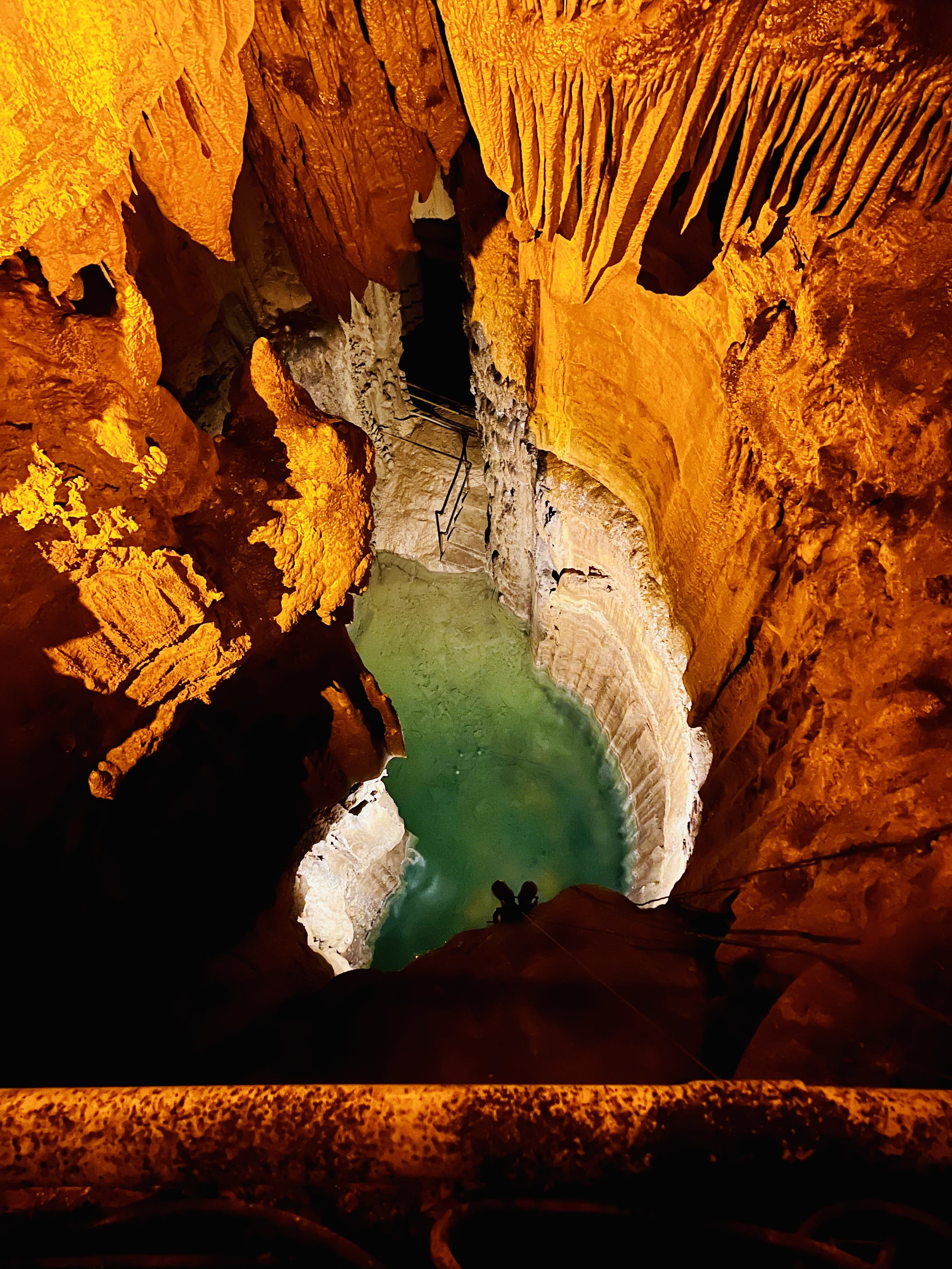How Cave Explorations Can Offer a Glimpse of a Radically Different Future
What an adventure! Early this June, my family and I explored a tiny corner of the longest known cave system in the world: Mammoth Cave National Park in Kentucky. As a biologist, I was particularly excited to spot some cave crickets (check out those huge legs and antennae!) and a gorgeous cave salamander. I have a soft spot for bats, but I was saddened to learn that the cave’s bat population has been devastated by white-nose syndrome, a fungal disease that causes bats to wake more often during hibernation. That disrupted sleep disturbs their metabolism, leading the bats to starve before spring. Another reminder of the importance of good sleep!
A cave cricket found in Mammoth Cave National Park.
During our extraordinary hikes through miles of caves and tunnels, I couldn’t help but think about recent conversations I’ve had about the future of humans on Mars.
💡 Could going underground be the key to shielding us from harmful radiation and cold?
It’s not a novel thought: remember, Elon Musk spun The Boring Company out of SpaceX back in 2018, which means that he’s interested in both tunnels and Mars.



As I journeyed through Mammoth Cave’s underground tunnels and galleries—first by lantern light and then by artificial light—I asked myself the billion dollar question. Would I actually want to live underground? Sure, if it helped with the cancer and frostbite that will complicate life on Mars. But how would I make a tunnel feel like a home?
I’d start by tackling light. LED systems can be designed to perfectly mimic the wavelengths and dynamics of natural sunlight—Earth sunlight, which will be an important biological and psychological signal for early colonists. Next, I’d bring in lots of plants. Details about water, humidity, light, and soil would be important; I think we’re going to be learning a lot of important lessons from vertical farming and other precision agriculture approaches in the coming years. I imagine underground Martian living spaces that capture a variety of vibrant Earth ecosystems, from deserts to manicured gardens to forests. Could we add pollinators like birds, butterflies, bees, and bats?
💡 Over time, I envision that Mars could host new forms of cities, underground, that deliver a radically different type of “urban nature”.
Or perhaps we’d take a page from Liam Young’s provocative Planet City and place all of Mars’ humans in a single city, leaving the rest of the planet to non-humans … whether they be the native Martian life (fingers crossed!), transplants of Earth’s natural species, or new forms of life that we have yet to bring into being.
💡 My Mars simulations taught me that there’s a huge difference between surviving and thriving.
I’m going to keep thinking about caves on Mars, both natural and man-made. Perhaps in the far-distant future, when humans have adapted genetically, socially, and psychologically to living on a new planet, we won’t need reminders of Earth. Or maybe these early cave cities will bind people together across vast distances and times, serving as touchstones to today, when we plant our feet on the ground, look up at the sky, and lay the foundations for a new future.
About Tiffany
Dr. Tiffany Vora speaks, writes, and advises on how to harness technology to build the best possible future(s). She is an expert in biotech, health, & innovation.
For a full list of topics and collaboration opportunities, visit Tiffany’s Work Together webpage.
Get bio-inspiration and future-focused insights straight to your inbox by subscribing to her newsletter, Be Voracious. And be sure to follow Tiffany on LinkedIn, Instagram, Youtube, and X for conversations on building a better future.
Donate = Impact
After a 19-day voyage to Antarctica aboard The Island Sky in November 2023, Tiffany has many remarkable stories to share & a wealth of insights to catalyze a sustainable future.
You can support her ongoing journey by making a contribution through her donation page. Your support will spread positive impact around the world, empower Tiffany to protect time for impact-focused projects, and support logistical costs for pro bono events with students & nonprofits.



